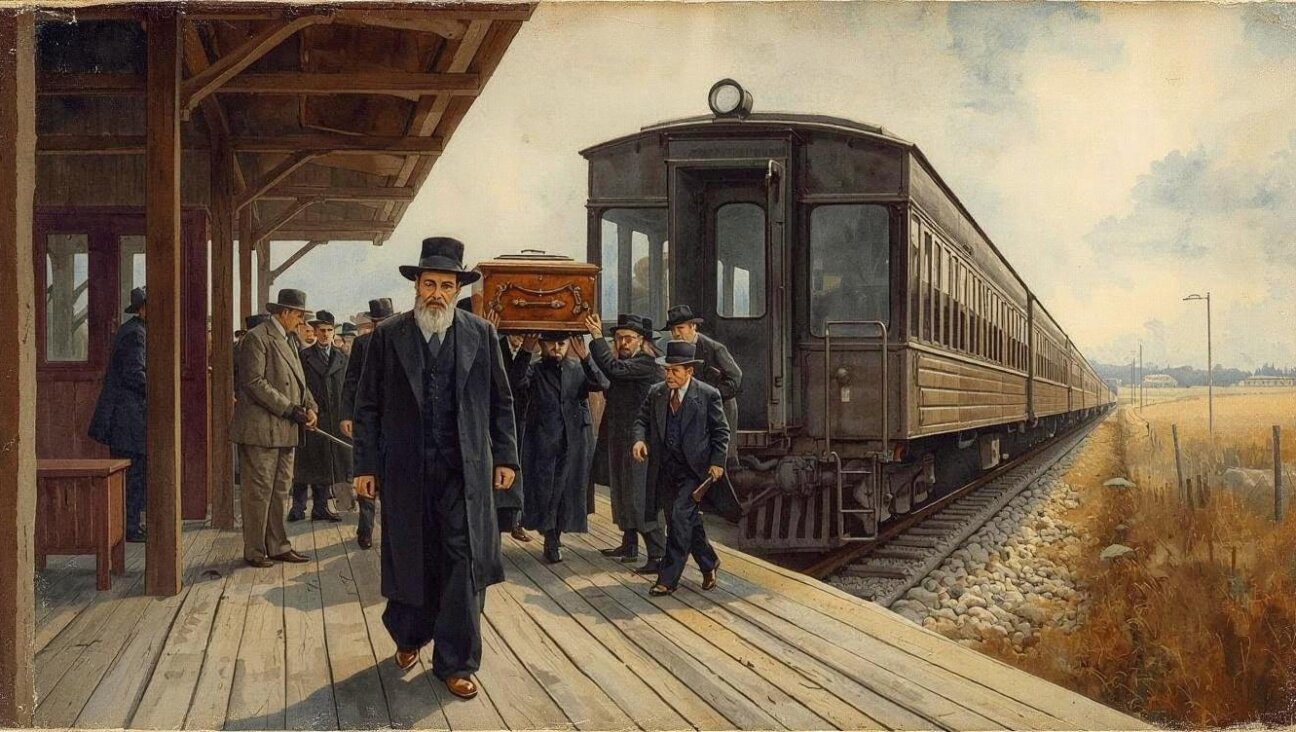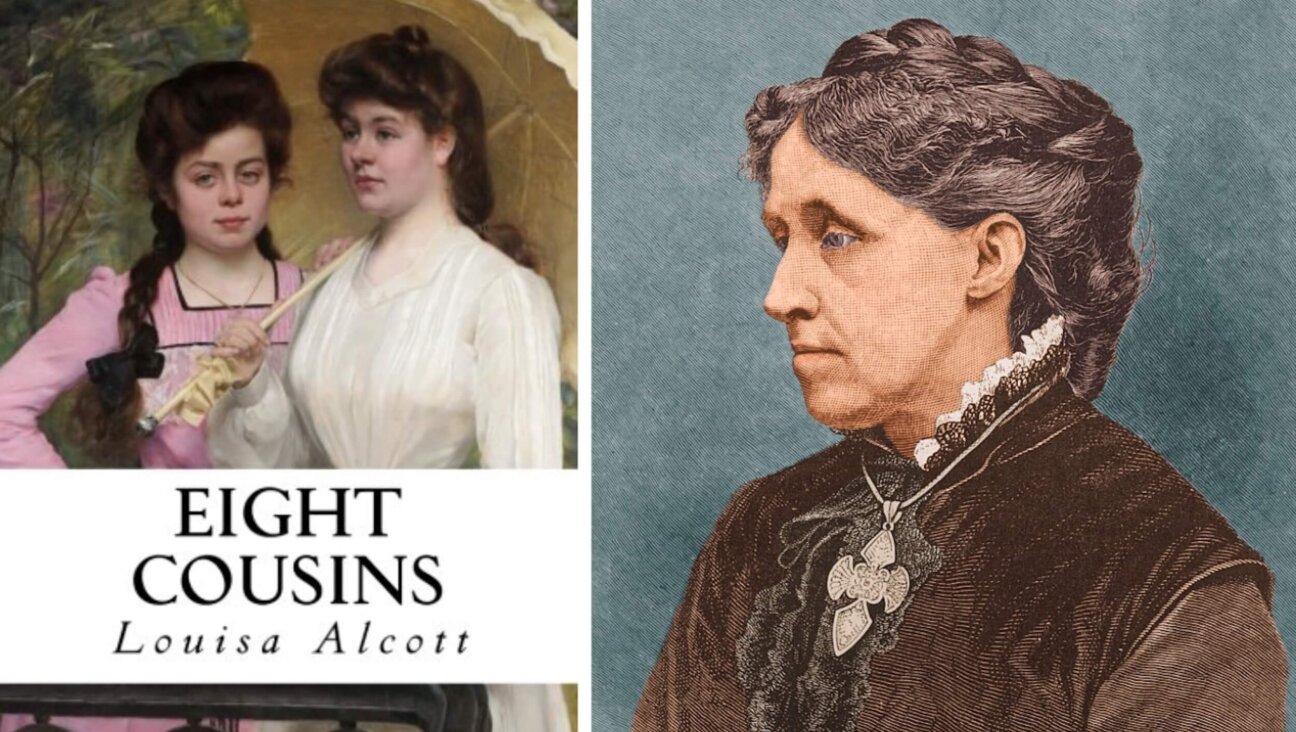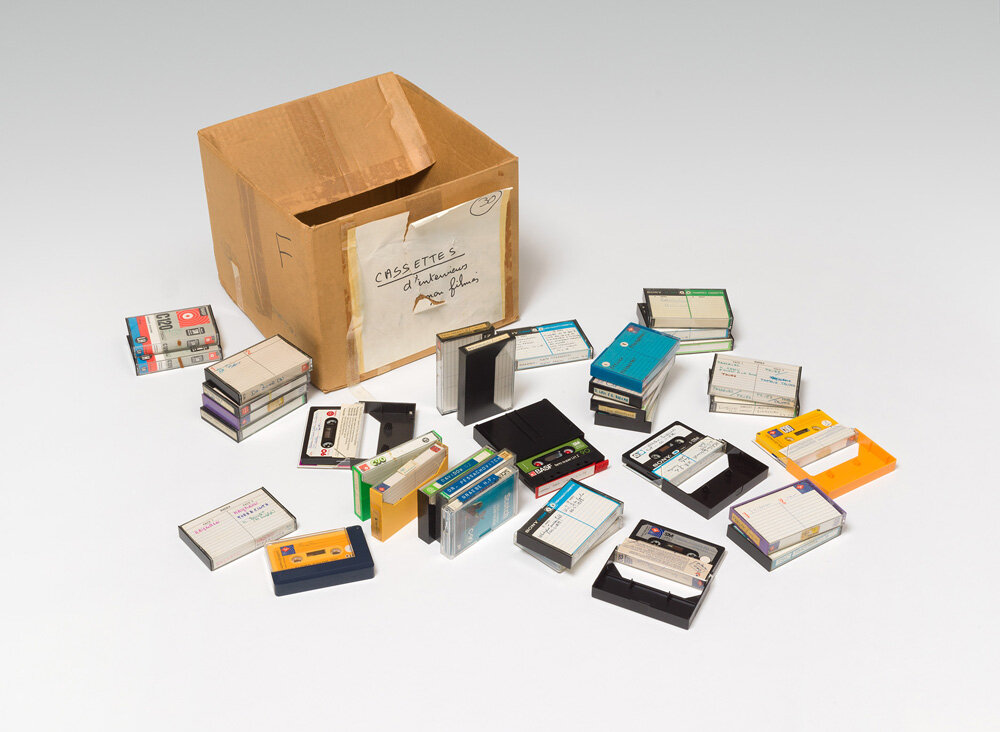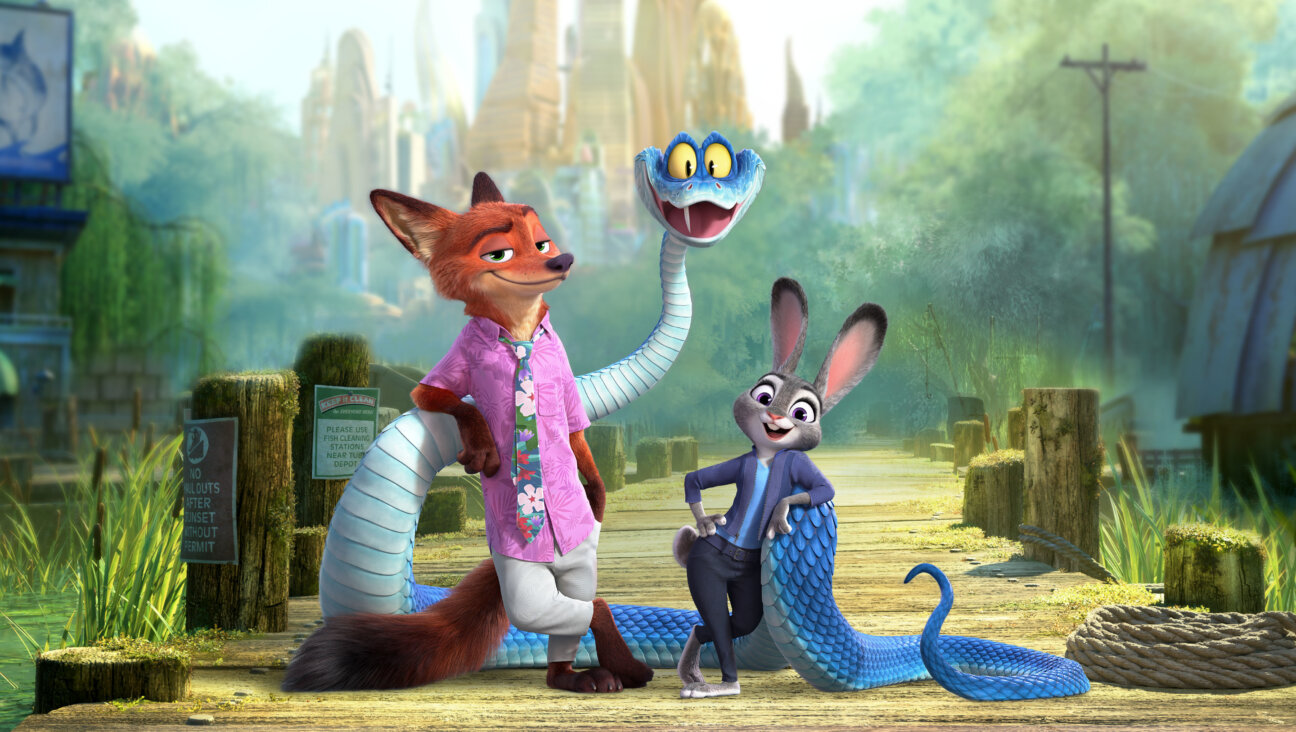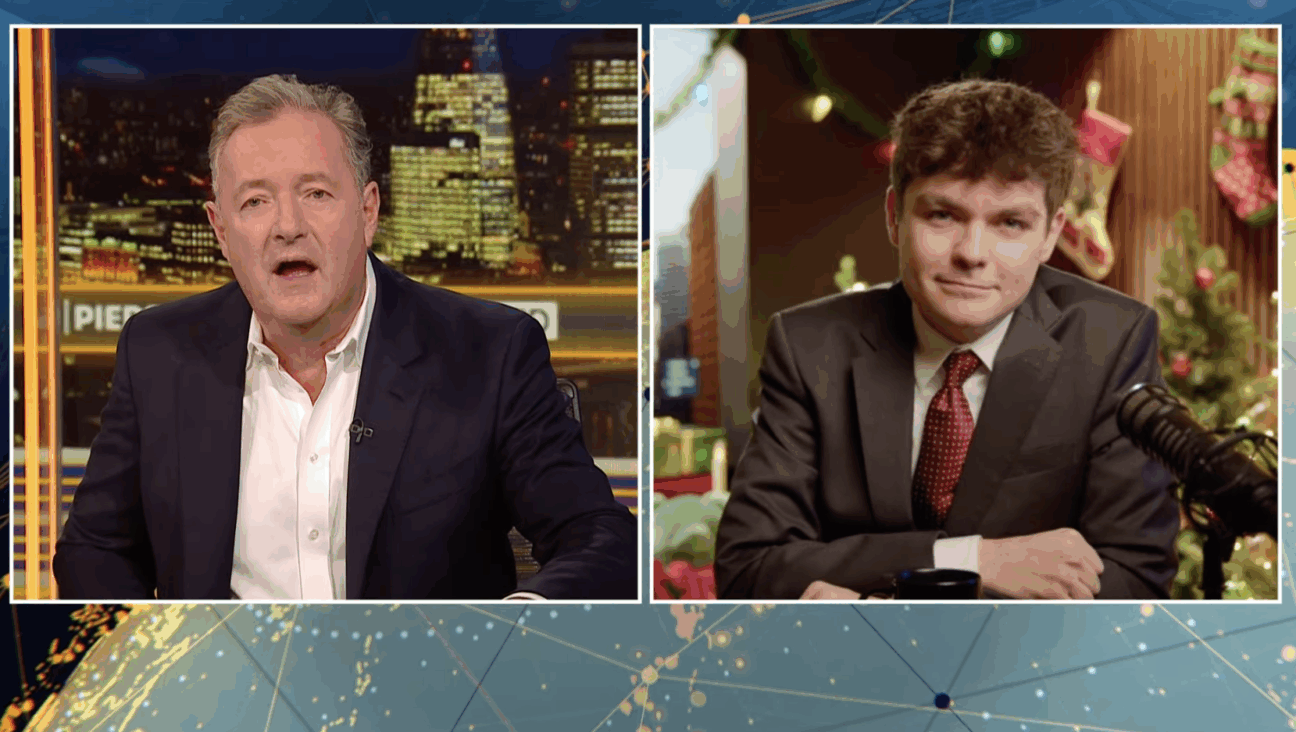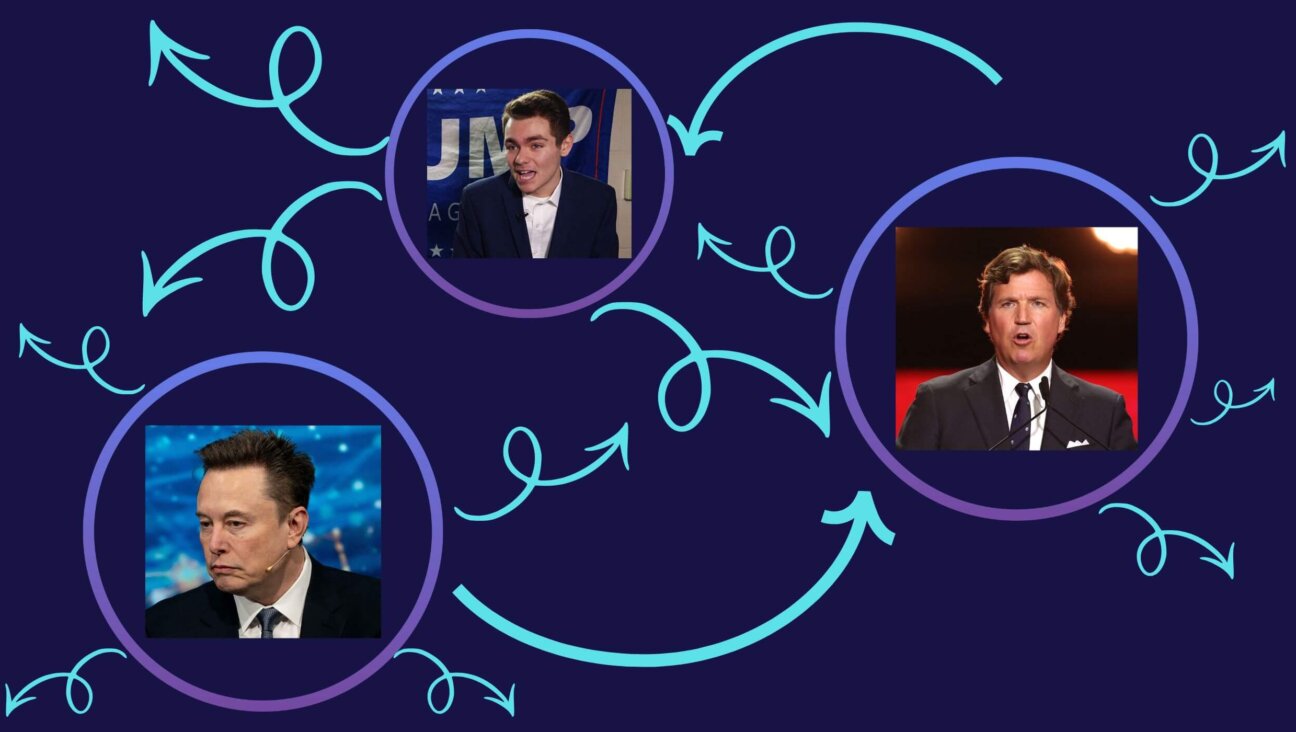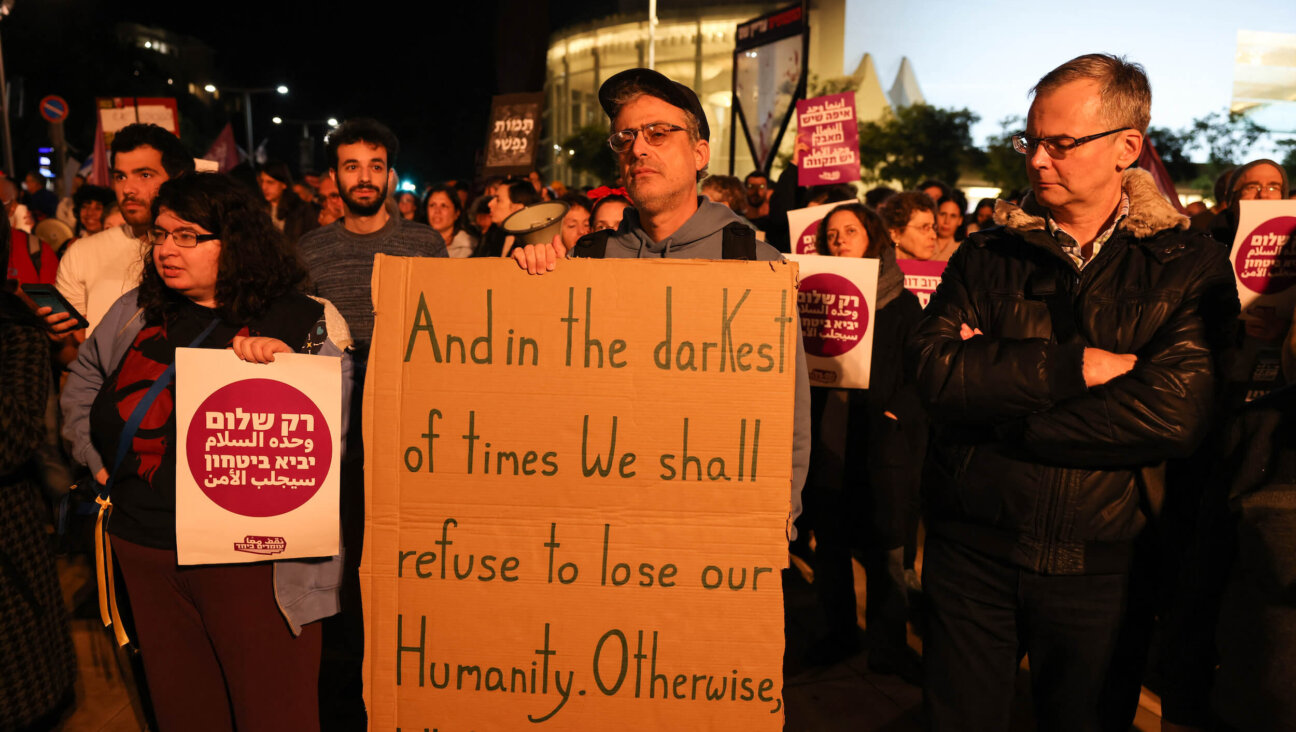Is ‘Andor’ about Jews, Palestinians — or both and/or neither?
The ‘Star Wars’ show is drawing from numerous histories, but which you see in it may depend on your own bias
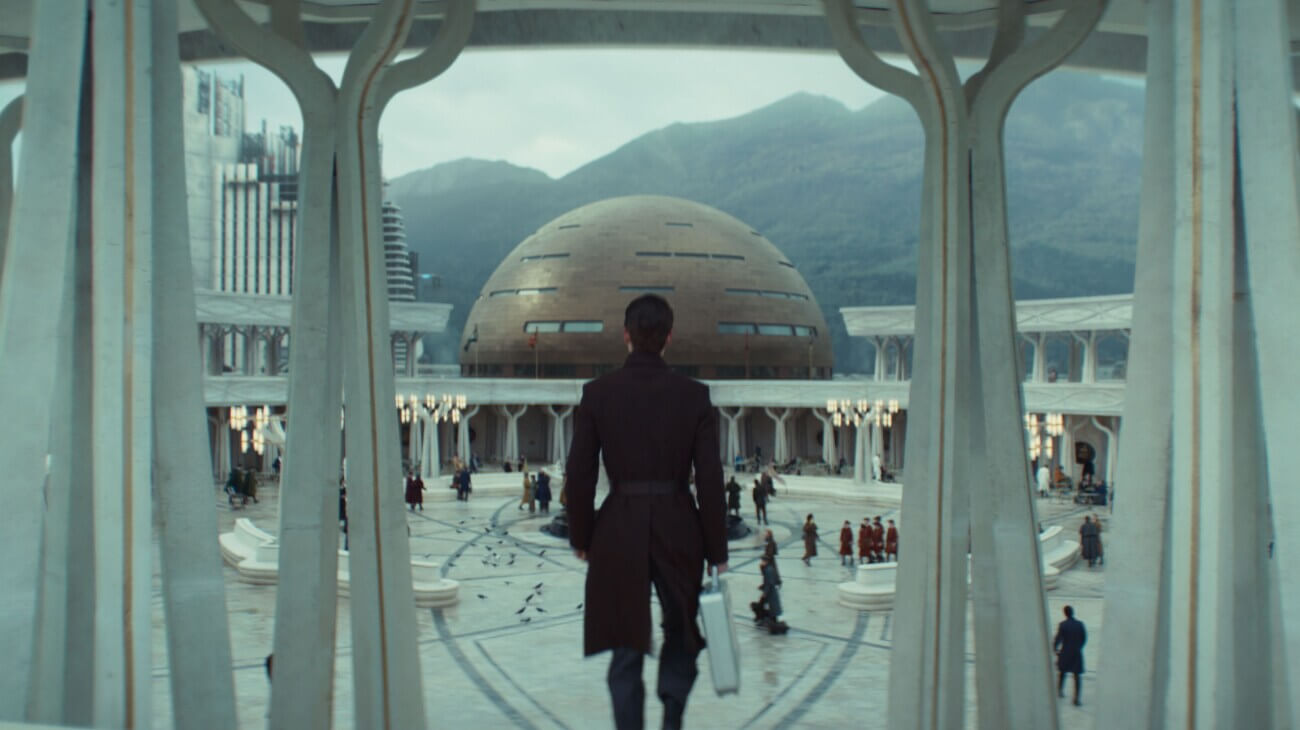
A view of the city of Palmo, the capitol of Ghorman. Courtesy of Disney+
This post contains spoilers for episodes 7 and 8 of Andor season 2.
The second season of Andor began with a recreation of the Wannsee Conference on the Final Solution to the Jewish Question. Tuesday, we saw its culmination: a massacre in a public square that some are already likening to Gaza. Can it be both?
That creator Tony Gilroy admitted taking inspiration from the infamous Nazi meeting at Wannsee suggests that the targets are, in some sense, Space Jews.
Known as Ghormans (or the Ghor), they are residents of a wealthy, peaceable planet with one industry: textiles. The Empire’s Ministry of Enlightenment — its propaganda arm — has been planting ideas that the Ghor are arrogant, greedy, clannish and, in its Biggest Lie, violent, to justify cutting down the population to mine for a rare mineral necessary for building a certain super weapon.
Prejudice against the Ghor is called “anti-Ghormanism.” Fomented by state media, this hatred’s rhetoric recalls Nazi talking points up to and including comparing Ghormans to the spiders that spin their planet’s silk. Their capital of Palmo has the star-shaped outline of some European fortress cities — notably, Terezin, which was home to a concentration camp.
While Star Wars is no stranger to exploiting orientalism, here it mostly eschews it. The Ghor are mainly played by white European actors and speak a kind of faux French. The costumes of the Ghorman underground, complete with overcoats for the drippy weather, were modeled after French and Italian Resistance fighters under Nazi occupation. Production designer Luke Hull described the planet, with its cafes and promenades, as having an “elegant European interwar vibe,” while its architecture is inspired by Turin, Mecca and Medina.
It’s fair to say we’re dealing with a composite, if one made to obscure anything too directly topical that might alarm Disney shareholders.
But culture writer Radheyan Simonpillai looks at Ghorman and sees Gaza. In a piece for the Guardian, he cites the imperial officer Dedra Meero’s insistence that, to bring Ghorman to heel, they’ll need dependable rebels to “do the wrong thing.”
In this quote, Simonpillai hears echoes of Israeli Prime Minister Benjamin Netanyahu’s “propping up Hamas” in an effort to divide Palestinians and advance his agenda. In the ways the Ghor are discussed he recognizes the “fear-mongering that facilitates the current onslaught against Palestinians in Gaza.” But though the Ghor are accused of being terrorists in blanket terms, they are more often charged with having an “inexplicable resistance to imperial norms.” That sounds like a familiar, stiff-necked refusal to assimilate.
And as for the Ghor’s so-called terrorism, supervised by more-seasoned leaders of the rebellion who resent their fumbling inexperience, its maneuvers only ever seem to have unambiguous military targets like a weapons convoy or naval base. The same can’t be said for Hamas, whether or not we view the Netanyahu government as engaging in “fear-mongering” to justify collective punishment.
Simonpillai draws from a Deadline interview with Gilroy where he referred to “the Russian Revolution, Haitian Revolution, the ANC and Palestine as all part of the cyclical history that informs the oppression and colonialism dramatized in the first season.” He neglects to mention what Gilroy listed directly before Palestine: the Irgun. (Not for nothing, in episode eight, a Ghorman bellhop explodes a hotel.)
Last season, a funeral in the arid streets of Ferrix ended in violence, resonating with any number of incidents in the West Bank, notably the procession for journalist Shireen Abu Alqa, who was likely killed by an IDF soldier, where Israeli riot police beat pallbearers.
But this season, when the Ghorman protestors were drawn into a trap by the Empire — a setup that recalls Tiananmen Square, both Bloody Sundays, the end of the Arab Spring in Cairo and any number of massacres in colonial India — the scene didn’t much resemble events in Gaza or the West Bank. The Israeli Defense Forces, Palestinian Authority and Hamas all have a history of violently cracking down on demonstrations including the Abu Alqa funeral, the March of Return and recent anti-Hamas protests in Gaza begun in March, but in those instances the crowds were either entirely or mostly unarmed.
In Andor, many in the throng have weapons — as one Imperial officer said, they were “counting on it” — even if they didn’t fire the first shots. Though analysts say a mining operation could destroy the entire planet, the bloodshed we see onscreen, with firefights, droids thwacking people and buildings left standing, doesn’t compare to the devastation of the Gaza Strip, the carnage of Oct. 7 or the empire’s future obliteration of worlds.
The Ghor, waving flags and pumping fists, sing an anthem invoking “valley, highland” which could suggest “from the river to the sea.” But another lyric, “raise your eyes to homeland skies” sounds like a line from Hatikvah: “an eye gazes toward Zion.” The refrain of “we are the Ghor” could just as easily be “we’re a Cossack family” from the Ukrainian national anthem. (Composer Nicholas Britell said in production notes that he and Gilroy wrote the Ghorman anthem before production for season 2 began in Nov. 2022.)
The chant of “the galaxy is watching” calls to mind protests at the 1968 DNC in Chicago that made popular the slogan “the whole world is watching,” since taken up by any number of movements.
I’m not suggesting that Simonpillai, or the many now chiming in on X, are wrong to see Gaza in Gilroy’s thriller. (In May 2023 conversation with Mehdi Hasan, Wajahat Ali, who himself saw Israelis and Palestinians in the narrative, called the show a Rorschach test.) But I suspect that recency — and personal — bias is at play.
Sci-fi media of a political stripe will always reflect back whatever headline we last read — it just so happens that the Israel-Hamas war is dominating them of late.
Since I began writing this piece, Israel has announced a plan to move most of the population of Gaza to the south and retain territory in the enclave and far-right finance minister Bezalel Smotrich vowed that the strip will be destroyed. (Some reports claim the operation will mean a re-occupation of the whole area; our columnist Dan Perry thinks the ultimate direction of the new campaign will be dictated by Donald Trump following his visit to the region later this month.) Now, I too, can’t help but think of the resonance — even as I detect parallels to Trump’s executive order dubbing coal a “critical mineral,” illegal deportations and fascist ethno-nationalism rising the world over.

Hours before the new episodes premiered in the U.S., India struck “terrorist infrastructure” in Pakistan in retaliation for an attack on tourists in India-administered Kashmir two weeks ago. Pakistan pledged to respond forcefully. The risk of war and retribution in the region is no doubt on the mind of some watching, even if it couldn’t have been anticipated by the show’s creators. There’s that Rorschach again.
History is rife with revolutions and suppression of both peaceful protests and violent insurrection. Rogue One, for which Andor serves as a prequel, was shaped in part by Gillo Pontecorvo’s 1966 classic The Battle of Algiers — and it’s often the Algerian example that is cited by supporters of the Palestinian right to resist.
Yet if we’re to stick with Gilroy’s established Nazi inspiration, it makes just as much sense to extend it to World War II-era resistance: The French or Dutch underground or Warsaw Ghetto Uprising, armed revolts whose tactics did not prioritize the killing and hostage-taking of civilians, but whose partisans often died either in combat or in camps.
But let’s say that the Ghorman are, if not Hamas, Palestinians.
They endured tragedy: 20 years before the action of episode eight, 500 unarmed Ghormans died so Grand Moff Tarkin could land his cruiser in the same plaza. They are subject to military surveillance, occupation and a punishing blockade. The way galactic senators speak of Ghorman “savagery,” following the “insurgency,” is evocative of how some in Netanyahu’s circle referred to Palestinians after Oct. 7. The fact that the massacre in Palmo is called an “unprovoked genocide” will ring bells for many who believe that is what Israel is conducting.
Maybe it’s my own bias, but I don’t think Israel is comparable to a galaxy-spanning, colonial project with a yearning to destroy worlds and no history in the lands where it establishes itself. (A proof of the difference is that my Wise Child ears, hot off the Feast of Freedom, perked up when a certain rebel leader said “next year in Yavin.”) That the Empire’s interest in Ghorman only extends to a natural resource makes it an easier parallel to the British empire, Belgian-occupied Congo or American wars in the Middle East; despite insistence otherwise, Gaza produces no oil, and experts say its offshore natural gas is negligible and wouldn’t be worth the cost to excavate. Israel’s motives — whatever you think they may be — are categorically different and follow a national tragedy that was no false flag.
One critic wrote that “people denying Andor’s second season is anything but a reflection on the horrors of Gaza are as delusional as they are disingenuous.” Call me what you will, but I think to say definitively that Andor is about any one struggle is to misunderstand it.
“You could drop a needle in the last, I don’t know what is recorded history, 3,000 years,” Gilroy said of his inspirations in the Deadline interview, drawing on slavery, oppression and the grand themes of heroism and betrayal in the churn of human events. “I mean, it’s a continuum.”
On it there’s a place for episodes from long ago, and not so far away: the Holocaust, suffering in Gaza, the resistance of Bar Kokhba, the Salt March, Ukraine, climate catastrophe and who knows what else.
The interpretations are as numerous as the stars in the heavens, because the wars are, too.

